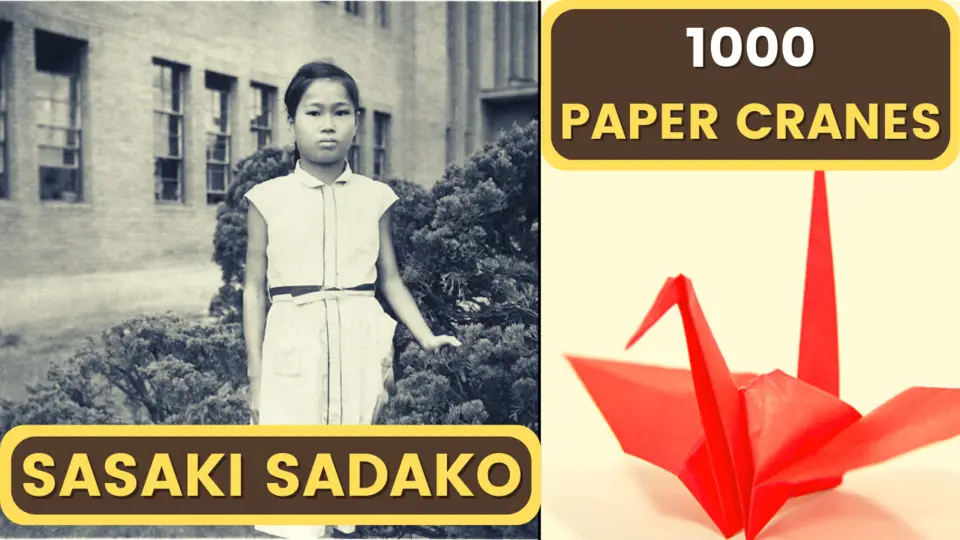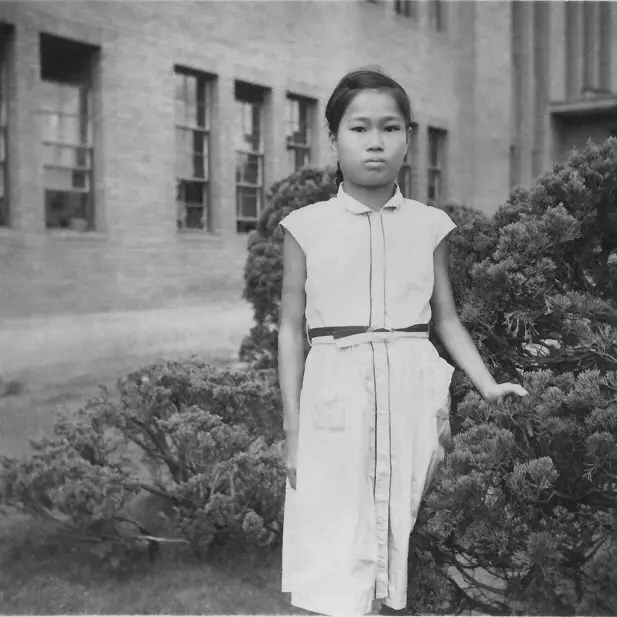When it comes to Japan and World War II, the first things that come to mind are the shocking events that took place in Hiroshima and Nagasaki. What happened in Japan during this period can also be recalled with the help of the people who survived the atomic bombs that were dropped by the United States on these two cities.
One of the most emblematic symbols of Japan will remain Sadako Sasaki, a Japanese girl who was born in 1943 and who passed away at the young age of 12, in 1955. She is known for her 1,000 origami cranes (or senbazuru in Japanese), but also as one of the most famous hibakusha, a survivor of the atomic bomb in Japan.
Sadako Sasaki’s testimonies turned her into a true emissary of peace and a living memory of all the children irradiated during the war.
In this article, I’ll share with you 10 incredible things about Sadako Sasaki and her 1,000 paper cranes.
1. The story of Sadako Sasaki and her 1,000 origami paper cranes.
Sadako Sasaki was born on January 7, 1943 and passed away on October 25, 1955. She was affected by the nuclear bombs dropped on Japan in World War II, along with other children her age. Her life story was told with the help of the 1,000 paper cranes she began folding while sick with leukemia. Before she died in 1955, her wish was to fold a thousand origami cranes in the hope of being granted a wish.
2. Sadako Sasaki’s 1,000 folded cranes symbolize much more than just some paper.
Sadako Sasaki told her story in a unique way. Today, we can say that the tragedy that unfolded in Hiroshima and Nagasaki is seen in a different light thanks to her. The 1,000 paper cranes are a symbol of all the innocent victims of wars.
3. Sadako Sasaki was very close to the site of the Hiroshima bombing.
One incredible thing about Sadako Sasaki is that she was only 2km from Ground Zero of the Hiroshima nuclear bombing. So, it’s surprising what she went through, but also the fact that she survived.
4. After the bombing, her mother realized that Sadako Sasaki had no injuries.
It is amazing that she was so close to the site of the explosion and yet suffered no injuries. Even though Sadako was thrown out the window by the explosion, her mother was surprised to find out that she was unharmed. At least visibly.
5. The black rain and the loss of her grandmother.
The nuclear explosion was followed by a black rain, a toxic rain polluted with black particles, remnants of atomic bomb materials. Sadako Sasaki was unable to find her grandmother after the black rain.
Read more: Top 10 Japan Culture Shocks | All You Need To Know
6. Sadako Sasaki grew up and developed like a normal child.
An incredible thing about Sadako Sasaki is that after the events in Hiroshima, she did not develop any symptoms of illness. She grew like a normal child her age and even had excellent academic and sporting achievements.
7. Unfortunately, the effects of the radiation were not slow to appear.
Even if, in the first years after the bombing, things seemed to proceed normally, in 1954, the inevitable happened. Sadako developed a swelling behind her neck and ears, and by January 1955 the illness has spread throughout her body.
8. The diagnosis of leukaemia did not deter her.
The doctor gave her the diagnosis received by most of the children who survived the Hiroshima and Nagasaki atomic bombings: leukaemia. However, this did not deter Sadako Sasaki, and she continued to believe that there was always hope in the midst of disaster.
9. Sadako Sasaki draws attention to nuclear disasters.
Today, Sadako Sasaki is a symbol of the devastating effects of nuclear bombs. Her 1,000 paper cranes will go down in history as a wake-up call to what happened in Hiroshima and Nagasaki. Studies show that the number of children with leukemia increased considerably after the two nuclear explosions.
10. During her hospitalization, a legend was born.
The testimonies of the children hospitalized during that time in the same hospital as Sadako Sasaki are heartfelt. She continued to encourage and inspire everyone by always having a positive attitude. A boy her age whom she shared the hospital room with claimed that Sadako Sasaki did not lose her faith until the last moment. Sadako believed that when her 1000 paper cranes would be finished, she would be granted a wish.
Read more: Japanese Snacks: How to Make Takoyaki in 10 Steps
Sadako Sasaki’s memory.
In the last days of her life, Sadako Sasaki felt worse and worse. She was in excruciating pain, which made folding origami almost impossible. She died in the hospital in October 1955 after having folded 644 origami paper cranes.
Her classmates were so grieved that they wanted to continue the tradition started by Sadako Sasaki and folded the remaining paper cranes up to 1000. Then, they formed an origami club in her honor, which is still active today at Hiroshima International School.
Moreover, her classmates made every effort possible to raise money and build a monument in her honor. Today, it is known as the Children’s Peace Monument and is located in the center of Hiroshima Peace Memorial Park.
Now watch the video presentation:
Surse: Tokyo Weekender, Yoyapon, Hazel Reeves, NPS



